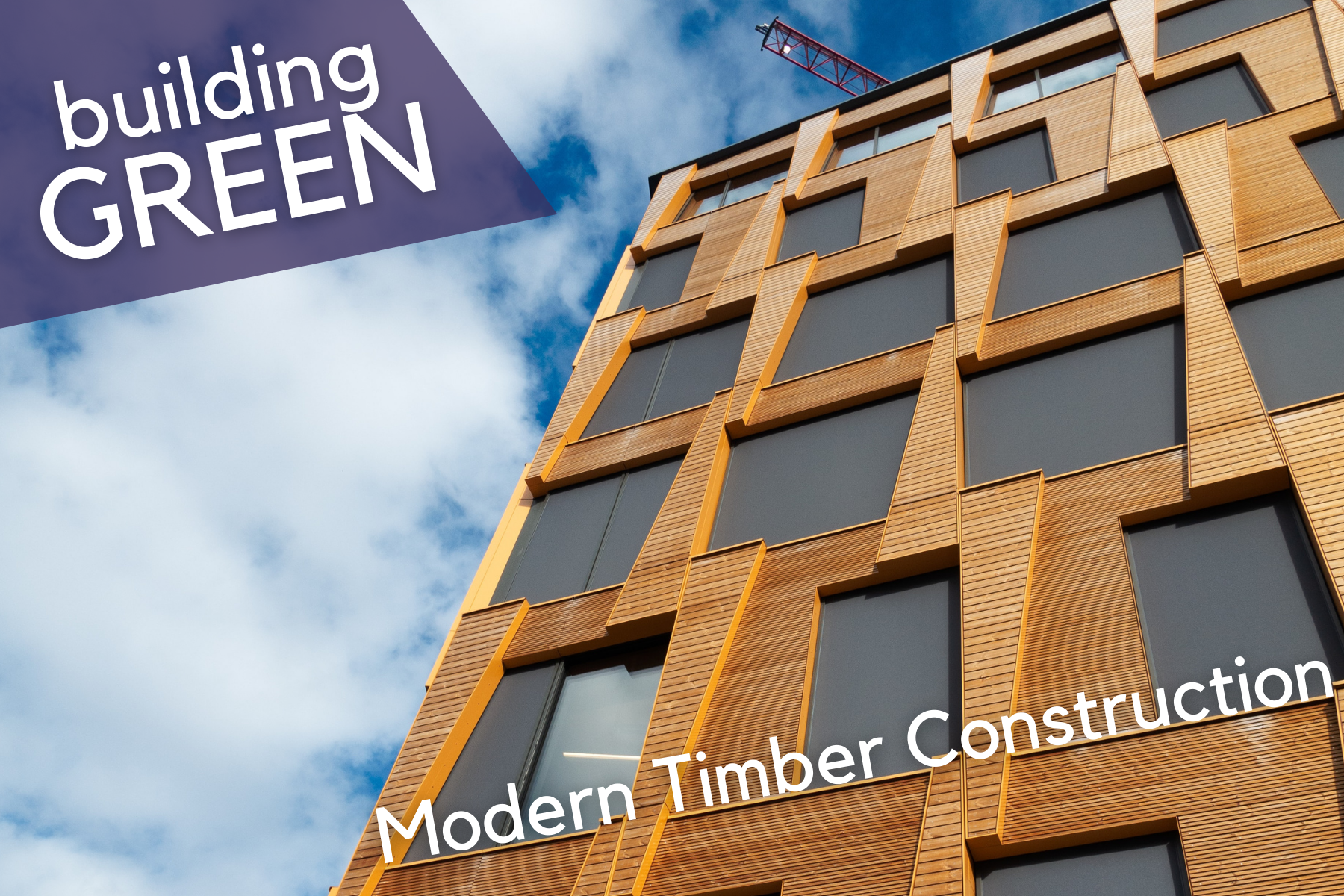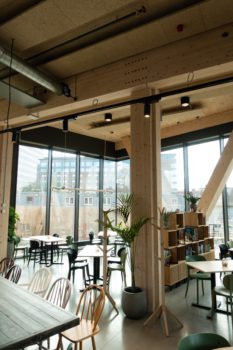A Swedish Take on Modern Timber Construction Posted by Chelsea B on Oct 1, 2021 in Culture
As a bright-eyed college grad, I relocated to the southern Swedish city of Växjö, Sweden for an internship. Nestled between thick forests and glittering lakes, Växjö has earned the title of “Greenest City in Europe” for trailblazing a number of environmental initiatives, including their timber construction program. While working for Växjö kommun I gained perspective on the systems and partnerships behind the scenes. What I learned is that large stadiums, libraries, campus university centers, even entire apartment complexes, can be built using modern techniques and timber framing on a large scale. Not only is this a more sustainable way to build, but the results are also stunning. This week, we’ll learn more about Växjö’s commitment to building greener and how it earned its lesser-known title – “Europas första moderna trästad (the first modern wooden city in Europe)”.
Timber Construction in Europe
Old wooden buildings are everywhere in Europe. But integrating modern träbyggande (timber construction) into a city’s infrastructure is still a growing idea. When I was interning in Växjö, I learned that German, Dutch, Danish cities are excelling at this way to bygga på ett nytt sätt (build in a new way) combining sustainability with modern architecture.
As a preventative measure against residential fires, most European cities still have limits on building with wood. Therefore, the construction of homes, apartment buildings, and civic centers has long been dominated by steel, concrete, and other building materials in the 20th century. In the 1990s, the E.U. began encouraging research and development in sustainable building, sparking new inventions and techniques in timber construction. It was in 1995, when Sweden joined the E.U., that they were officially permitted to start building flervåningshus (several story buildings) using timber construction.
Modernt träbyggande – Modern Timber Construction
Industry professionals use the term modernt träbyggande (modern timber construction) to separate traditional wood frame stick building from the new techniques and best practices developing today. International research and collaboration have produced new byggteknik och byggprocesser (building techniques and building processes). These innovations have changed the game of modern architecture and made way for timber construction on an industrial level.
The results? Faster, more streamlined building processes for start-to-finish. The latest software and programming tools allow architects to innovate with design and builders to assemble entire buildings faster than before. Limträ (laminated wood) and färdigbyggad (pre-assembled) facades, walls, and flooring systems are manufactured to be put into place on-site. And probably the neatest thing about building with wood? It continues to lagra koldioxid (store and process carbon dioxide) long after it is turned into building material.
Växjö, A Small City with a Big Agenda
Europas grönaste stad – Greenest City in Europe
In 2007, the BBC named Växjö the “greenest city in Europe” (Europas grönaste stad). This has since become the city’s slogan and it’s fair to say that they are living up to their name. I introduced this small but mighty municipality in my 5 Tips to Discuss Sustainability in Swedish post. But as a reminder, Växjö was the first city in the world to declare a goal of ditching fossil fuels by the year 2030. The 60,000 inhabitants in Växjö proper get their energy via centralized heating and cooling, burning byproducts of the local forest industry to account for 90% of the energy produced. Not bad, eh?
Europas första moderna trästad – The first modern wooden city in Europe
Växjö is located in dense forests and freshwater lakes of central Småland. Convenient if you’re trying to become a world-wonder in timber construction, but it was the city’s commitment to sustainability that laid the groundwork for the boom in this field. Together with collaborators like Linnéuniversitet and forestry cooperative Södra, Växjö has invested in trähus (timber buildings) to spark development all over the city.
During my internship, I spent a lot of time welcoming international delegations from Asia and continental Europe to Växjö. Groups of city officials, architects, and urban planners were considering investing in sustainable development in their own cities and wanted to see it first-hand. A typical studiebesök (study visit) brought us to Limnologen, four 8-våningshus (8-story buildings) apartment buildings, the stunning campus buildings Hus N och Hus M at Linnéuniversitet, and well as Arenastaden (stadium city), a part of town with a multi-building complex, and the most jaw-dropping limträbågar (laminated wooden arches) you’ve ever seen. For the visuals, check out this brochure put out in Swedish and English by the city of Växjö.
Walking into a building built almost entirely of wood is a special feeling. It’s grounding, and for me, it always reinforces the feeling that even in our modern society it’s clear that people and trees and meant to spend time together.

Build vocabulary, practice pronunciation, and more with Transparent Language Online. Available anytime, anywhere, on any device.






Comments:
Sherman Rosen:
What a marvelous introduction to modern wood construction in Sweden. I especially appreciate the incorporation of specialized Swedish terms.
Aaron B:
Jätteintressant!